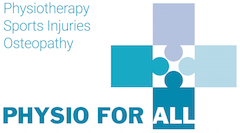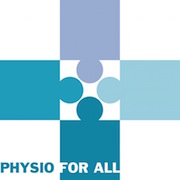Crossfit and Bootcamps are becoming very popular among women. They provide both fitness and a great social hub but are they safe or do they increase the risk of Pelvic Floor problems?
1. The journey of two CrossFitters – new mums
2. CrossFit, Bootcamps and high impact intensity exercises: Are they pelvic floor friendly during the childbearing year?
3. What are the recent recommendations?
4. Five Tips before returning to High Impact Training, Bootcamps and CrossFit Exercises post birth
1. The journey of two CrossFitters throughout their childbearing year

Sarah and Wendy* were keen regular CrossFitters pre-pregnancy and therefore were used to high impact exercises and weight training.
Sarah managed to keep fit throughout her pregnancy, she carried on CrossFit until 3 months pregnant and when she started to be uncomfortable, she moved to more pregnancy-adapted exercises.
Wendy carried CrossFit until 30 weeks pregnant when she developed mild Pelvic Girdle Pain. She scaled down the high impact and heavy weight exercises (jumping, box jumping, double under) and modified her exercise regime.
Both delivered healthy babies and are now joyful new mums very keen to go back to fitness.
At 2 months postpartum, Sarah booked a post-natal MOT Check with a women’s health physiotherapist at Physio4All to assess if she could go back to CrossFit or Bootcamp or if she needed to adapt and have closer supervision in her post-natal recovery. She did not have any symptoms of pelvic floor dysfunction.
Post-natal check revealed optimal healing conditions of the episiotomy scar, strong and functional pelvic floor, a closed diastasis rectus abdominis and overall good abdominal and core control. She was prescribed a graded pelvic floor and abdominal/core functional exercise training as well as advice on return to high impact exercises.
Wendy, a very athletic and CrossFit competitor, booked an appointment with one of our women’s health physiotherapist as she was feeling something was “bulging” and not right “down there. She was just 6 weeks post-natal and had started very light training with her CrossFit coach.
Post-Natal check revealed on vaginal manual examination a tight and weak pelvic floor as well as a 2-3 degree prolapse exacerbated with loading position as squats and lounges. Wendy had rather strong upper abdominals, but her lower abdomen was protruding with loading exercises.
Wendy had 6 sessions of Pelvic Ploor Physiotherapy including manual pelvic floor therapy, biofeedback, progressive specific pelvic floor and coordinated core exercises to control abdominal pressure.
Now 8 months postpartum, Wendy is recovering well and is getting back to her beloved CrossFit training. Her physio has liaised with her coach for advice on progressive safe loading abdominal and pelvic floor exercises as well as position techniques.
2. CrossFit, Bootcamps and high impact intensity exercises : Are they pelvic floor friendly during the childbearing year?
CrossFit is described as “constantly varied functional movements performed at high intensity”. (d)
It involves repetitions of high impact and loaded exercises such as squats, pull-ups, jumps, swings, box jumps, double under, dead lifts, kettle bell swings…
How the Pelvic Floor copes with high intensity exercises during pregnancy and postpartum?
Every mother has a unique medical, pregnancy and labour history as well as unique level of fitness. Some women can have an optimal pelvic floor function throughout their childbearing year even with intense fitness training.
Other women already present or are at risk of developing Pelvic Floor Dysfunctions such as Urinary Stress Incontinence USI (a), bowel incontinence and Pelvic Organ Prolapse or POP (b).
Here are the facts:
Close to 50 % of all women experience Urine Incontinence during pregnancy and about 1/3 women experience Urine Incontinence postpartum. (1)
Studies have also shown that:
- female athletes involved in high impact exercises are more likely to suffer from Urinary Stress Incontinence (2,3)
- Repeated heavy lifting is a potential cause of prolapse (4,5)
- Exercises that increase intra-abdominal pressure such as crunches, sit-ups and double leg lifts should be individualised due to their pelvic floor risks (6). Those exercises are also encountered in some Pilates and Yoga.
This does not mean that CrossFit and Bootcamps are not great programs because some are. Some women may have the pelvic floor function that allows their body to withstand high intensity exercises and some not.
Although you might feel fit enough and not present any symptoms, but this does not necessarily mean that your body is ready to return to that level of intensity.
It is important to be aware that certain type of exercises can increase the risk of pelvic floor problems.
3. What are the recent recommendations
The American College of Obstetricians and Gynaecologists recommend that women who already have symptoms and women who are at higher risk of pelvic floor dysfunction should avoid impact exercises such as jumping, boxing, running, contact sports, heavy weights. (7)
Core abdominal exercises such as sit-ups and crunches, double leg lifts should also be avoided.
A Pelvic floor rehabilitation plan should be implemented prior return to high impact activities.
4. Five Tips before returning to High Impact Training, Bootcamps and CrossFit Exercises post birth
4.1 MOT Postnatal Check
Go and see a Women’s Health or Pelvic Health Physiotherapist who recommend all mothers to have a thorough Postnatal Check from 6 weeks postpartum:
-
- Abdominals and Rectus Diastasis (separation) check
- Manual Vaginal Check of your pelvic floor to assess their tone, strength, ability to relax and muscle coordination*
- Episiotomy, perineal tears and C-section scars check
- Lombo-pelvic assessment
- Discussion of your concerns and goals
- Agreed Treatment option program- Pelvic Floor Therapy (http://vita-health-group.onyx-sites.io/physio-4-all/therapies/pelvic-floor-therapy/
- Advice , help and guidance towards return to fitness and sport
*Stress Urinary Incontinence is not always associated with weak pelvic floor muscles: some women have strong pelvic floor but a dysfunctional tone and coordination.
 4.2 Start gently, slowly, build progressively and be patient
4.2 Start gently, slowly, build progressively and be patient
Respect healing and recovery time. If you had sprained your ankle, rehabilitation is phased, and you would not be jumping in few weeks or months post injury.
You may be eager to go back running, squatting, lunging… but do you feel ready?
Listen to your body and what it tells you
Your physiotherapist will help you through the rehabilitation phase to reconnect with your pelvic floor and deep core muscles, to correct and progress from foundation to functional exercises.
4.2 Talk to your coach or personal Trainer, who should be qualified to teach prenatal and postnatal women.
4.3 Don’t ignore signs that your pelvic floor is not working properly. Peeing while jumping is not normal and can be treated. Get professional help!
4.4 Enjoy your special Mummy time
*Sarah and Wendy are not their actual names
Glossary
- Urinary Stress Incontinence (USI): Urinary incontinence is the unintentional loss of urine. Stress incontinence happens when physical movement or activity — such as coughing, sneezing, running or heavy lifting — puts pressure (stress) on your bladder
- Prolapse: the downward movement of a pelvic organ into the vagina
- Intra abdominal pressure: an increase in the pressure in the tummy which causes strain downwards
- CrossFit

References
- Stian Langeland Wesnes, Steinar Hunskaar and Guri Rortveit (2012). Epidemiology of Urinary Incontinence in Pregnancy and Postpartum, Urinary Incontinence, Mr. Ammar Alhasso (Ed.), ISBN: 978-953-51-0484-1, InTech
- FozzatiC, Riccetto C, Hermann V, Brancalion MF, Nascif CH, Marques LR, Palma PP. Prevalence study of stress urinary incontinence in women who perform high-impact exercises. Int Urogynaeco J 2012;23(12):1687-91
- Thyssen H H, Clevin L, Olesen S, Lose G. Urinary incontinence in elite female athletes and dancers. Int Urogynecol J. 2002;13:15–17.
- Woodman PJ, Swift SE, O’Boyle AL, et al. Prevalence of severe pelvic organ prolapse in relation to job description and socioeconomic status: a multicenter cross-sectional study. Int Urogynecol J Pelvic Floor Dysfunct. 2006;17(4):340–345.
- Bump R, Norton P (1998) Epidemiology and natural history of pelvic floor dysfunction. Obstetrics and Gynecology Clinics of North America 25(4):723-746.
- Thompson J, Michelle B, French S, Briffa N K, Andrews A. Should women with pelvic floor dysfunction do abdominal curl up exercises? (2015) j.physio. May 2015 Volume 101, Supp1, p e1516-e1517.
- https://www.acog.org/Patients/FAQs/Exercise-During-Pregnancy
- Chartered Society of Physiotherapy. Advice for physiotherapists and other health professionals to exercise in the childbearing year








